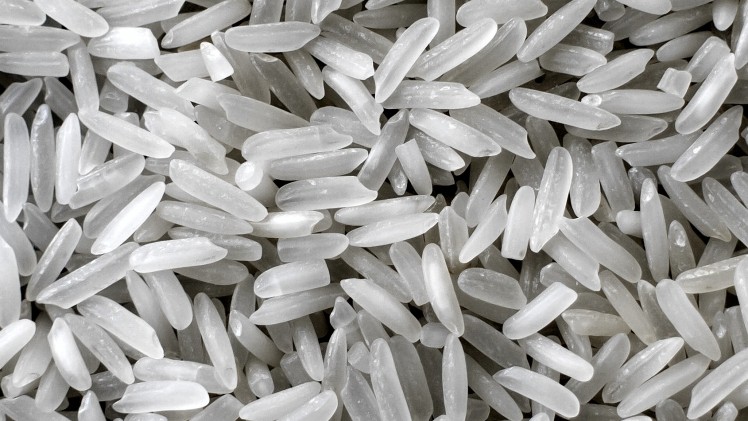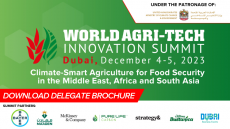Dateline Southeast Asia
Prism rice data: The Filipino response to food security disasters

Since 2014, the Philippine Rice Information System (Prism) has been providing the Department of Agriculture with timely seasonal data on rice areas and yields, as well as assessments of crop health and damage in the event of a typhoon, flood or drought. In its first annual executive meeting last month, Prism presented its achievements and activities to a wider audience, including high-level officials and ministers.
“Prism uses remote sensing, crop modelling, cloud computing, and smartphone-based surveys for rice mapping and monitoring,” said Alice Laborte, who leads the Prism project at the International Rice Research Institute.
One of seven projects under the Food Staples Sufficiency Programme, Prism is a collaborative project between IRRI, the Philippine Rice Research Institute and the Department of Agriculture, which funds its development and implementation.
“Specifically, Prism uses high-resolution synthetic aperture radar imagery acquired throughout the rice growing season,” Laborte said.
“This imagery can be acquired day or night and even on cloudy days. This makes the technology perfect for monitoring rice growth and assessing damage to rice crops resulting from floods and typhoons.”
The rice maps derived from satellite images are validated through field surveys by local DA field technicians, local government units and, in some cases, farmers who gather the data.
“This activity provides a way for us to assess the accuracy of Prism products while helping to build the technical skills and capacity of our partners. Our rice maps for the 2015 wet season, for example, had an overall accuracy of 85%, based on 2,223 validation points throughout the country,” Laborte added.
For the 2014 and 2015 cropping seasons, 443 satellite images across the country were acquired and used in rice area mapping and damage assessment. Some of these images were used to map flood-affected parts of Nueva Ecija, where last year’s Typhoon Koppu hit, and to assess drought-affected areas in Mindanao since last year due to the prolonged El Niño.
"These pieces of information are very useful in improving damage and loss assessments to assist in providing appropriate interventions for rehabilitation and recovery and to improve predisaster preparedness,” said Christopher V Morales, DA field operations service director.
Pests and diseases can damage nearly 40% of the rice crop in Mindanao. Recent information on crop health, such as the intensity of injuries caused by pests and diseases, and cropping practices of farmers, were also presented during the meeting. The information is based on data collected by project partners who used smartphone applications to gather and submit data in real time.
“To help ensure the country’s rice sufficiency in the future, even as population continues to rise, rice production will require intensification, good varieties, better crop management and improvement across the rest of the rice value chain,” said Samarendu Mohanty, IRRI’s senior economist. “Policies also play an important role.”
"Through Prism, we can use the power of remote sensing. This is a breakthrough in rice history,” said Jimmy Quilang, deputy executive director for research and Prism project leader at PhilRice. “Given various locations, planting dates, and effects of extreme weather events, we can now have a better, faster, and accurate assessment of rice areas, yield estimates, and forecast. These valuable information will help our decision makers to act immediately and implement adjustments and improvement on food security plans.”
More stores from Southeast Asia...
Diabetes’ cost to Singapore’s economy estimated for the first time
The cost of diabetes to Singapore’s economy, estimated at S$1bn (US$740m) in 2010, is predicted to grow to S$2.5bn by 2050, according to the first ever study of its kind in the country.
According to the report, published in BMC Public Health Journal by researchers in Singapore and America, 42% of the cost of diabetes comes from medical treatment, whereas the remainder is attributed to indirect costs, including losses to productivity.
In 2010, the cost of diabetes was equal to 0.35 per cent of Singapore's GDP and almost 10% of its healthcare spending, costing each working patient an estimated S$7,678.
According to the authors, this is expect this to increase to almost S$10,600 per capita by 2050, especially as the disease is expected to affect increasingly more younger people.
"Even in our conservative scenario, diabetes has imposed a significant economic burden on the national healthcare system and will continue to do so in the next four decades,” the report said.
The team now plans to continue the research with greater focus on cost estimates in a bid to help lawmakers determine the effectiveness of public health interventions to slow the rise of the disease.
Singapore exporters turn attention to India’s vast market potential
Trade between Singapore and India has come under the spotlight after two manufacturing industry groups signed an agreement with Indian food importers to make it easier to export to the South Asian country.
The Singapore Manufacturing Federation, Singapore Food Manufacturers Association and Forum of Indian Food Importers signed a memorandum of understanding that is expected to overcome Indian regulatory hurdles.
India has stringent rules on the import of food and beverage products, though these have been increasingly relaxed in a bid to attract more importers, said SFMA's deputy vice-president Jimmy Soh.
"In India, there are different ways on how a product is sold at different prices. It is complex for Singaporean food brands to bring in their products there. Also, there is a lack of understanding of what Singaporean food is in India.
"The agency set up by the Indian government protects their consumers but in recent years, they have relaxed the regulations to suit international food companies," Soh added.
Meanwhile, the Indian signatory will organise workshops to help Singaporean exporters understand Indian consumers better and learn more effective ways to market their products.
Minister for Trade and Industry S Iswaran said: "The MOU aims to help Singapore companies overcome regulatory hurdles when entering the Indian market and for the private sector to deepen their networks."
With India expected to be the world’s fifth biggest consumer by 2025, according to a McKinsey Global Institute that predicted consumer spending to reach almost US$13tr five years later, Singapore sees the country as a lucrative destination which it is well placed to supply.
"The idea is to promote Singaporean food to India, give better choices to India. We have a free trade agreement with Singapore that would help us bring products at a much lower cost to consumers,” said Amit Lohani, founder and director of FIFI.














